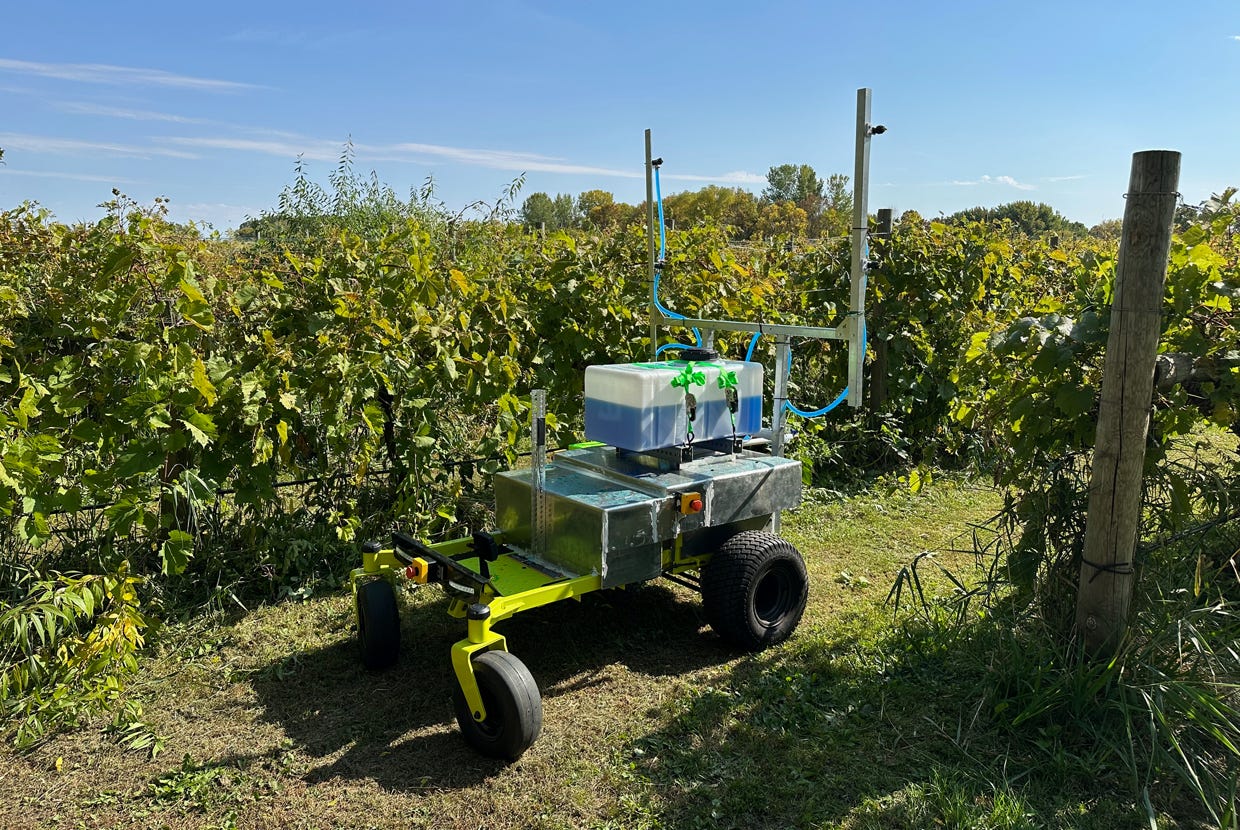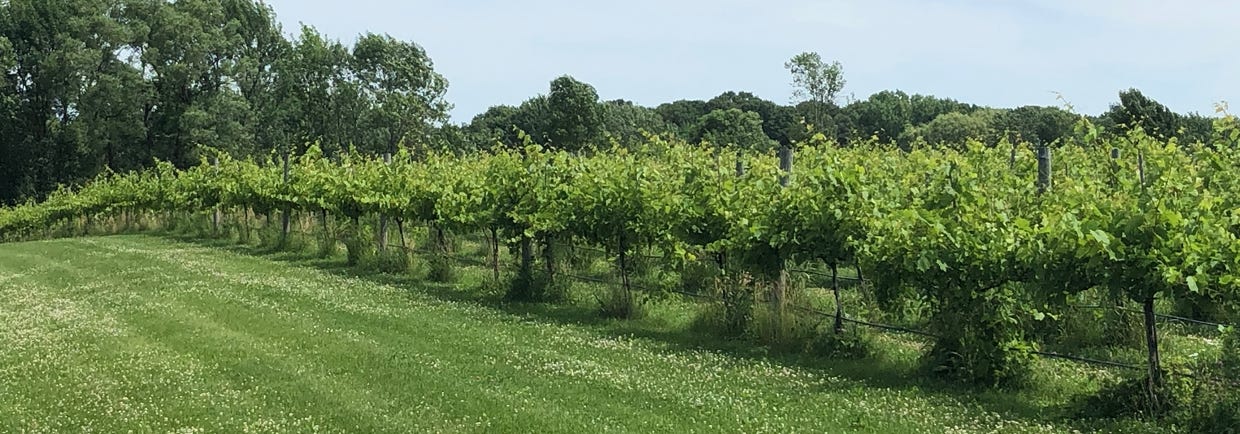Controlling Japanese Beetles in a Vineyard with a Drone Pesticide Sprayer

History
Deer dance in the fields and eagles soar overhead. Deep within the fields crickets chirp and frogs croak. This is the Natzel family farm. Our family farm’s tillable acreage is in a “rural farm in an urban setting” on the eastern border of Owatonna, Minnesota. The farm has been in the family since 1917.
At present, the speciality crop farm is divided into two portions. One plot is managed haylage which is marketed to the horse industry as high quality horse hay. The remaining portion of the land has been planted into vineyard over the last nine growing seasons. The vineyard consists of white and red cold hardy grape varieties with hardiness to -30 to -40. Varietals include Frontenac Gris, Marquette, LaCrescent, Swenson White, Louise Swenson, Frontenac Blanc and many others.
This next generation specialty farm is being designed and built as a high value added farm vs. a traditional commodity crop farm (corn, soybean, wheat, etc.). A farm winery/distillery is the next step and is being designed in mind for climate change and a low environmental impact. The vineyard has a drip irrigation system installed for both targeted fertilization and to defend against the drought effects induced by climate change.

This material is based upon work that is supported by the National Institute of Food and Agriculture, U.S. Department of Agriculture, under agreement number 2019-38640-29879 through the North Central Region SARE program under project number FNC20-1240. USDA is an equal opportunity employer and service provider. Any opinions, findings, conclusions, or recommendations expressed in this publication are those of the author(s) and do not necessarily reflect the view of the U.S. Department of Agriculture.